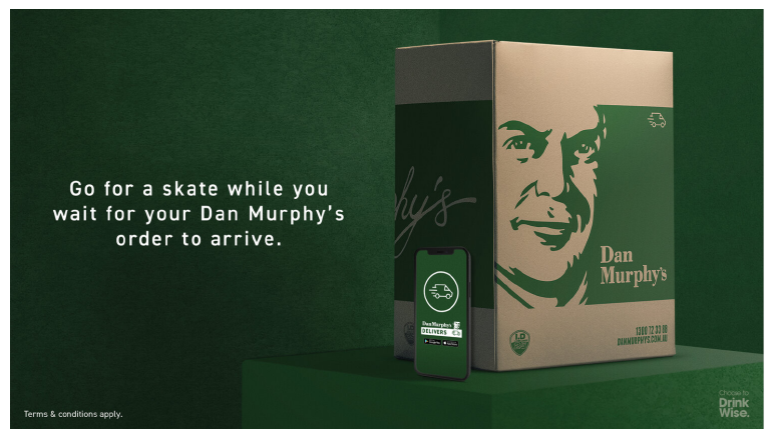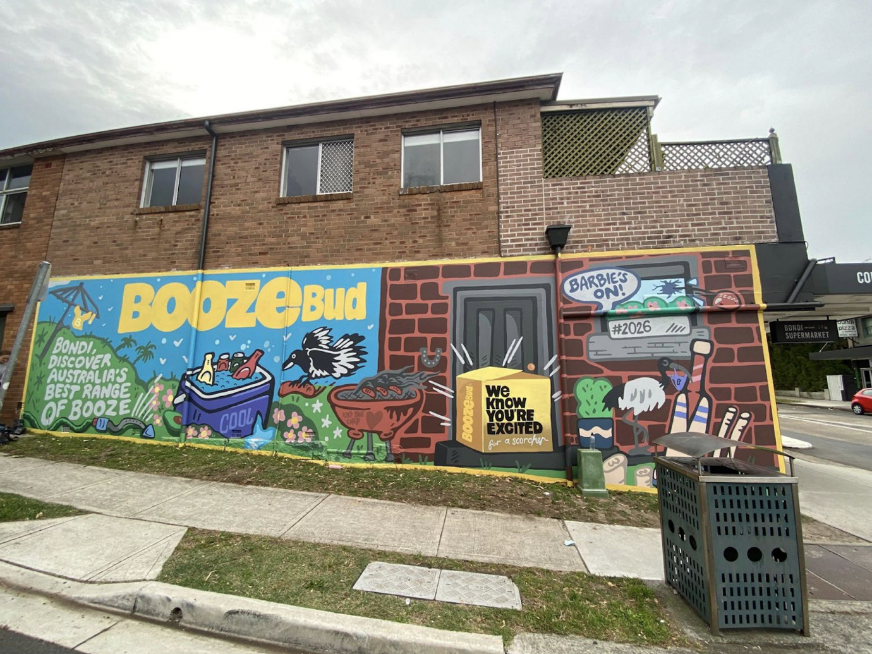Last year, a Dan Murphy’s mobile billboard rolled into Byron Bay, parking itself 185 metres from Byron Bay High School. Emblazoned across it read, “Go for a skate while you wait for your Dan Murphy’s order to arrive.”
Our community expects advertising of harmful and addictive products like alcohol to follow government-led rules that protect our children, families, and communities from harm. But alcohol companies are largely left to write and administer their own rules through the Alcohol Beverages Advertising Code (ABAC) Scheme.
The result — our children are increasingly exposed to alcohol marketing, increasing their risk of using alcohol at an earlier age and in higher volumes.i
So, when community members complained that the Dan Murphy’s billboard was targeting their children, their complaint was dismissed by ABAC.ii

This is a typical response by ABAC, which is funded and managed by the three major alcohol industry peak bodies (Brewers Association, Spirits & Cocktails Australia, and Australian Grape & Wine).
Fundamentally, the ABAC Scheme is flawed. This is most clear through the voluntary nature of their advertising code, meaning that alcohol companies are not required to abide by the code and don’t face the consequences for breaching it.
The voluntary code is also limited in scope and ambiguous, which often leads to interpretations favourable to alcohol company interests, allowing our children to be exposed to harmful marketing practices.
There are clear contradictions in recent ABAC adjudication decisions that dismiss community complaints about alcohol marketing targeting children and adolescents.
For example, in the Dan Murphy’s billboard case, the ABAC panel determined that the advertisement was not appealing to children because the advertisement used dark rather than bright and contrasting colours. However, June 2021, the panel also dismissed a community complaint about marketing by alcohol giant Diageo that used bright and contrasting colours and childlike phrasing ‘New can, who dis?’. The panel stated that the ‘retro’ design made the advertisement primarily targeted to adults.iii

In December 2021, the ABAC panel dismissed community complaints about a bright cartoon-styled mural advertising the rapid alcohol delivery company Boozebud on the same street as a primary school. Not only did the panel dismiss this community complaint, but ABAC also ‘worked collaboratively’ with Boozebud to develop this lively mural. Although hundreds of children passed by this mural every day, the panel dismissed the complaint because it appealed to adults as well.iv

Despite the Code stating that the use of designs that create confusion with soft drinks constitute an appeal to children and adolescents, in March 2022, ABAC dismissed a community complaint about an advertisement for Bundaberg Rum that closely resembles non-alcoholic ginger beer. The advertisement featured a cross-promotion between the alcoholic and non-alcoholic products, with both products depicted, but it was still deemed not to breach the Code.v
In further contradiction, the use of Bundy Bear in this cross-promotion was not deemed to breach the code, despite the ABAC panel having previously stated that Bundy Bear has the potential to appeal to children.vi This builds on the history of Diageo’s Bundaberg Rum advertising to children, including during the popular show for toddlers, Dora the Explorer.vii

These are just a few examples of ABAC’s recent failure to protect children and adolescents from alcohol marketing, but the systemic failures of the ABAC Scheme are well documented.viii
Our community deserves better advertising standards for alcohol products. These should be developed and administered by a governing body that represents the community’s interests, not the interests of alcohol companies. Only then can we see alcohol companies being held accountable for harmful targeting of children.
i Anderson et al. (2009) Impact of Alcohol Advertising and Media Exposure on Adolescent Alcohol Use: A Systematic Review of Longitudinal Studies. Alcohol & Alcoholism 43(3):229–43; Smith L.A. and Foxcroft D.R. (2009) The effect of alcohol advertising, marketing and portrayal on drinking behaviour in young people: systematic review of prospective cohort studies. BMC Public Health 9(51) doi:10.1186/1471-2458-9-51; Jernigan et al. (2016) Alcohol marketing and youth alcohol consumption: a systematic review of longitudinal studies published since 2008. Addiction 112: 7–20 doi:10.1111/add.13591; Sargent and Babor (2020) The Relationship Between Exposure to Alcohol Marketing and Underage Drinking Is Causal. Journal of Studies on Alcohol and Drugs.
ii ABAC (2021) ABAC Adjudication Panel Determination 129/21.
iii ABAC (2021) ABAC Adjudication Panel Determination 145/21.
iv ABAC (2021) ABAC Adjudication Panel Determination No 273/21.
v ABAC (2022) ABAC Adjudication Panel Determination No 11/22.
vi http://www.abac.org.au/wp-content/uploads/2013/04/Final-Determination-Bundaberg-23-April-2006.pdf
vii Amy Corderoy, Sydney Morning Herald, ‘Bundaberg Rum advertisements on Dora the Explorer videos spark outrage’ (2015) <https://www.smh.com.au/healthcare/bundaberg-rum-advertisements-on-dora-the-explorer-videos-spark-outrage-20150923-gjte3x.html>.
viii For academic reviews see: Reeve B. ‘Regulation of Alcohol Advertising in Australia: Does the Abac Scheme Adequately Protect Young People from Marketing of Alcoholic Beverages?’, QUT Law Review (2018) 18(1) 96–123; Pierce H et al. ‘Regulation of alcohol marketing in Australia: A critical review of the Alcohol Beverages Advertising Code Scheme’s new Placement Rules.’ Drug Alcohol Review (2019) 38(1) 16–24. For government reviews see: Northern Territory Government, ‘Alcohol Policies and Legislation Review Final Report’ (2017) Available from https://alcoholreform.nt.gov.au/milestones/about-the-review/final-report; Education and Health Standing Committee. Alcohol: Reducing the harm and curbing the culture of excess. Legislative Assembly, Parliament of Western Australia; 2011. Available from: https://www.parliament.wa.gov.au/parliament/commit.nsf/(Report+Lookup+by+Com+ID)/1511331A52931060482578B80007F0D5/$file/97909904.pdf







